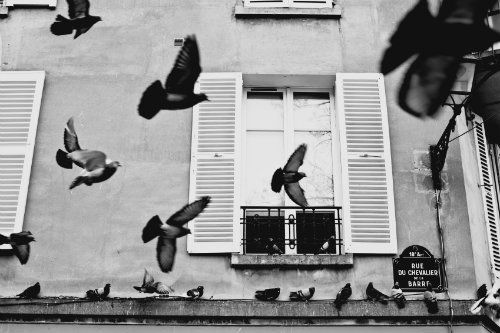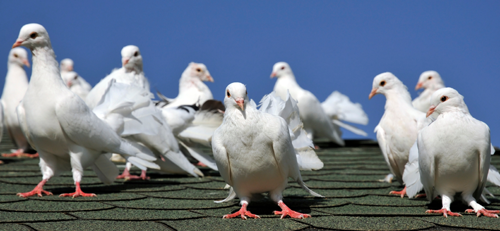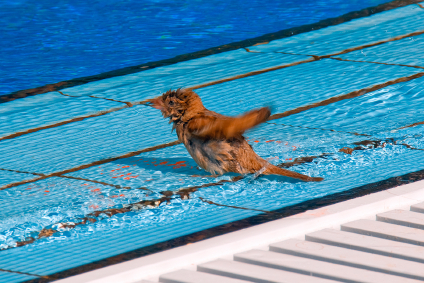
Without bird control measures to deter them, birds will perch and even nest on the window sills, ledges and awnings of your home. If you have a two-story home, the upper windows and ledges make especially ideal for birds on the lookout for food and predators.
Birds and their nesting materials can damage window screens and awnings. Bird droppings can jam up windows, making it hard or even impossible to open and close them properly. These droppings can also eat into vinyl windows and painted surfaces on ledges, leaving unsightly splotches. In these tough economic times, the last thing you need is to have to repaint your home or replace the windows. Bird droppings also carry any of 60 known diseases—like E. coli, Salmonella. These can easily waft into an open window, creating a health hazard, especially to children.The only real solution for today’s homeowners is humane, effective bird deterrents. Here's what the pros recommend to deter pigeons, sparrows, crows, gulls, starlings and many other species of birds:
Sonic Bird DeterrentsEasy to set up on the side of your home that’s most troubled by birds, Sonic Bird Deterrents deter birds from perching and nesting on windows, ledges and awnings. These ingenious devices emit a series of pre-recorded distress and predator calls that resemble a bird’s natural enemy. If your windows and ledges are attracting several bird species, get the Bird Chase Super Sonic. It emits distress and predator calls for 22 different species of birds. It can be programmed to turn on or off at night. The sounds it emits are natural bird sounds, so it won’t irritate your pets or annoy your neighbors. Red-Tail Hawk DecoysThe natural enemy of most birds, Red Tail Hawks hunt by day, which is why Hawk Decoys can be so effective in deterring them. If your window sill or ledge is wide enough, place one or two in high visibility areas and birds will stay away. The best hawk decoys will be realistic looking and be made of heavy duty plastic to endure many seasons of outdoor weather. All you have to do is move them around from time to time to convince birds your decoys are a live threat.Transparent Bird GelIdeal for narrow ledges and windowsills, as well as awnings, birds hate to set foot on Transparent Bird Gel. It sticks to their little toes and makes them feel trapped (although it won’t trap them—much like Post-it Notes, the adhesive is very mild). The gel is easily applied, practically invisible and very humane. The best bird gels will provide up to 6 months of protection.Before implementing any bird control measures, be sure to clean away nesting materials and droppings from sills, ledges and awnings. Birds are naturally attracted to the scent of nests and droppings, so they will consider your home most hospitable.


